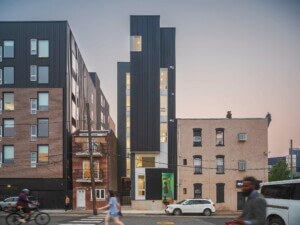<bobs>/flickr
Amid the anxiety, speculation, and real hardship caused by the ongoing economic downturn, the provocative thesis of this Washington Post article stands out, which, if correct, could hold a silver lining for architects. Reporter Elizabeth Razzi interviews housing historian Virginia McAlester about how previous periods of economic declines shaped consumer demand for housing. The answer is simple and somewhat obvious: the demand for small houses rises. Her predictions for this cycle are less so.
While McAlester argues the downturn of Depression through World War II, and the resulting shortage of materials, led to the construction of smaller houses, specifically Levittown and its progeny, she argues that this cycle could lead to a different landscape. While she argues that McMansions, with their multiple gables and double height foyers, will fall out of fashion, they will not be replaced with rows of modest Cape Cods repeated in endless rows. She argues that some McMansions will be converted into multiple unit “manor houses.” New construction, she argues, will likely be more compact, attached and more closely located to shopping and other amenities.
While a spokesman for the National Association of Homebuilders refutes some of McAlester’s predictions, he agrees that highly energy efficient houses will be increasingly in demand.
deatonstreet/flickr
What could this mean for architects? While many architects design lavish, over-scaled homes, speculative builders, who rarely employ architects, dominate the McMansion segment of the market. Architects have for the past twenty years, been increasingly designing mixed-use buildings and districts, as well as compact, urban, and green projects. So it seems logical, then, that developers who are looking to salvage their unfinished subdivisions or respond to future demand may give enterprising architects a fresh look.










